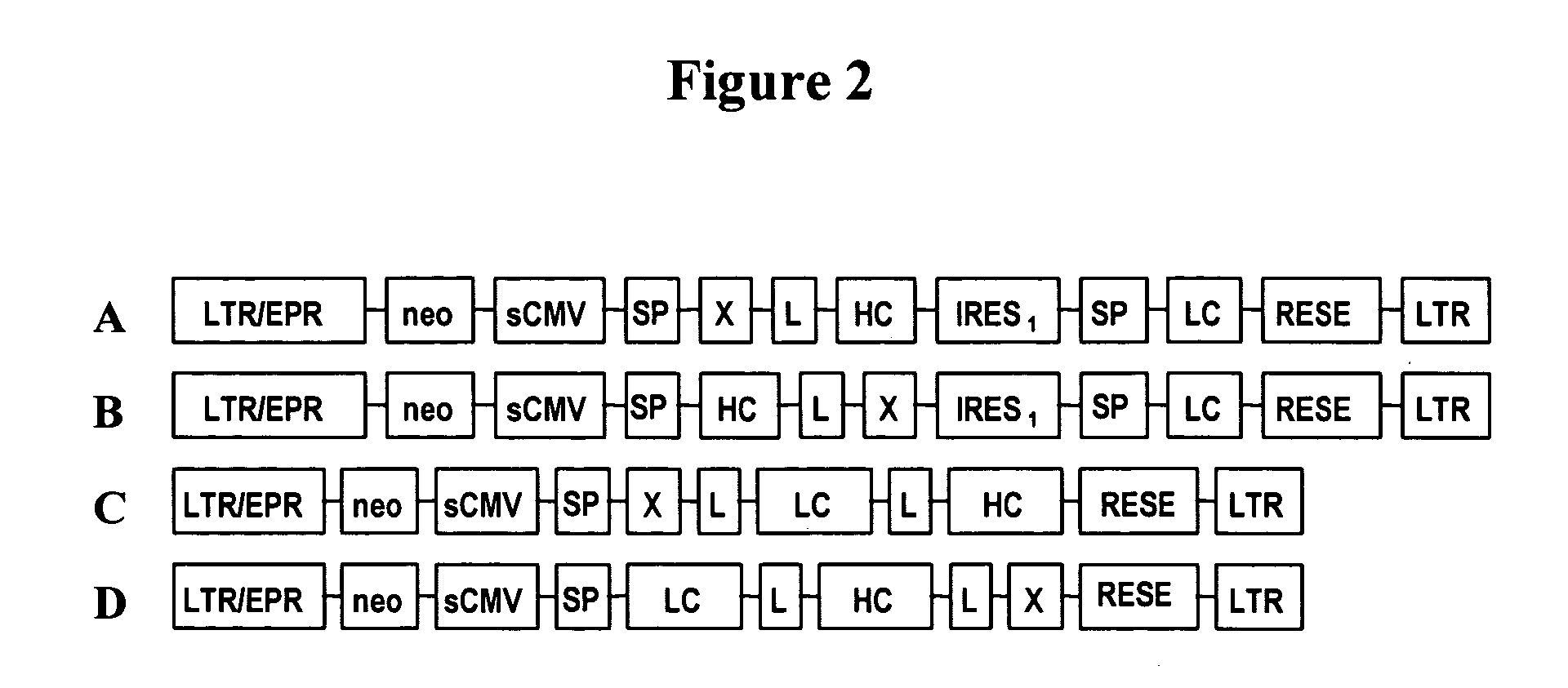Targeted biocides
a biocide and target technology, applied in the direction of biocide, drug composition, specific cell targeting fusion, etc., can solve the problems of contaminating entire batches of products, affecting the safety of products, and affecting the quality of products,
- Summary
- Abstract
- Description
- Claims
- Application Information
AI Technical Summary
Benefits of technology
Problems solved by technology
Method used
Image
Examples
example 1
Effects of PLA2 on Sporozoite Infectivity
[0377] This experiment describes the effects of PLA2 on sporozoite infectivity. Briefly, sporozoites were incubated in an isotonic saline solution (37.degree. C., 30 min) with a range of concentrations of PLA2 isolated from honey bee venom (Sigma-Aldrich Corp., St. Louis, Mo., 1.5 U / .mu.g protein). Control sporozoites were identically incubated in buffer containing concentration-matched BSA but no PLA2. Sporozoites were then washed in medium and inoculated onto replicate Caco-2 human intestinal epithelial cell monolayers. 24 h later, infection was quantified in test and control monolayers by immunofluorescence assay as described herein and the mean percent reduction of infection calculated. The results indicate that PLA2 achieved a highly significant reduction of sporozoite infectivity at a concentration as low as 0.014 U / ml (FIG. 3, P<0.0005). Percent viability of Caco-2 cells following exposure to PLA2-treated sporozoites (86%) was similar ...
example 2
Target Antigens CSL, P23, and GP25-200 are Conserved in Both Type 1 and Type 2 C. parvum Isolates
[0378] Western blotting of type 1 and type 2 C. parvum was performed to evaluate expression of the antigens and epitopes defined by the monoclonal antibodies proposed herein. For these studies, human C. parvum isolates were obtained from Peruvian patients and genotyped by nested PCR primers designed to amplify a region within the 18S rRNA gene, followed by RFLP analysis of the amplicons to differentiate Type 1 from Type 2 according to G. D. Sturbaum et al., Appl. Environ. Microbiol., 67:2665-2668 [2001]). Two human isolates determined to be of the Type 1 genotype were evaluated by Western blot for recognition by monoclonal antibodies 3E2 (anti-CSL), 1E10 (anti-P23), and 3H2 (anti-GP25-200) using previously described methods. (M. W. Riggs et al., Infect. Immun., 62:1927-1939 [1994]). The Iowa Type 2 isolate (J. Heine et al., J. Infect. Dis., 150:768-775 [1984]) was examined in parallel. E...
example 3
Various Genetic Engineering Techniques
[0379] The present example describes the isolation of the genes for the heavy, light, and J-chains from the 3E2 murine hybridoma cell line, cloning into the retrovector backbone in two configurations (for cell culture expression and for transgenic production), and clonal analysis of the vector producing packaging lines to identify high titer lines maintaining the fidelity of the protein.
[0380] In one embodiment, cells from the 3E2 hybridoma are used to extract total RNA with the purpose of isolating the monoclonal antibody-specific heavy, light and J-chain transcripts. Upon total RNA extraction, the RNA is reverse transcribed to create cDNA using standard molecular biology protocols. The total cDNA is then used as a template to specifically amplify the mouse IgM-heavy and light chains as well as the J chain. Site-directed mutagenesis primers are used to amplify the sequences. The use of these primers adds short sequences of DNA that introduce su...
PUM
| Property | Measurement | Unit |
|---|---|---|
| Composition | aaaaa | aaaaa |
| Electrical resistance | aaaaa | aaaaa |
| Permeability | aaaaa | aaaaa |
Abstract
Description
Claims
Application Information
 Login to View More
Login to View More - R&D
- Intellectual Property
- Life Sciences
- Materials
- Tech Scout
- Unparalleled Data Quality
- Higher Quality Content
- 60% Fewer Hallucinations
Browse by: Latest US Patents, China's latest patents, Technical Efficacy Thesaurus, Application Domain, Technology Topic, Popular Technical Reports.
© 2025 PatSnap. All rights reserved.Legal|Privacy policy|Modern Slavery Act Transparency Statement|Sitemap|About US| Contact US: help@patsnap.com



